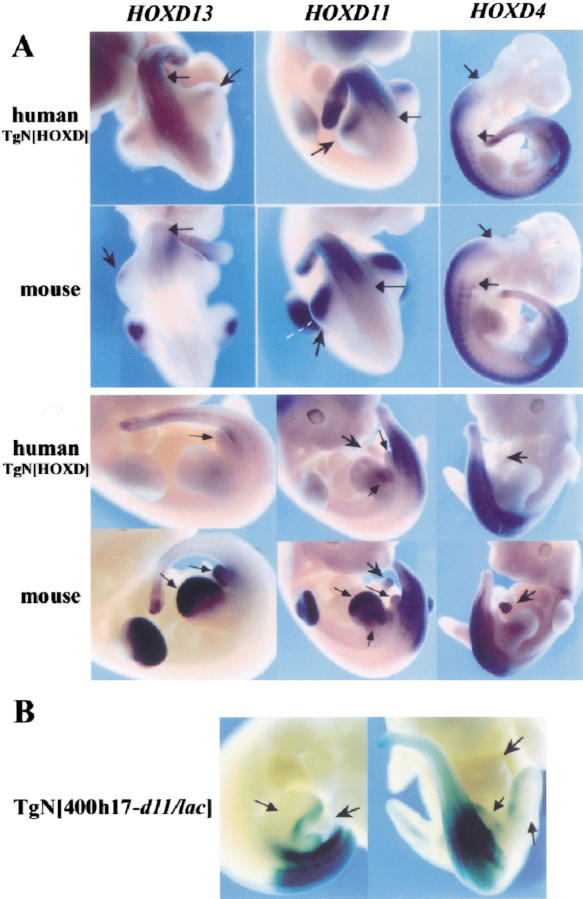Figure 3.
(A) Human HOXD genes in mice. In E10.5 embryos (top), the human HOXD13, HOXD11, and HOXD4 genes were expressed in the trunk, up to anterior levels similar to those of the corresponding murine genes (black arrows). Human HOXD13 and HOXD11 were also expressed weakly in the developing posterior hindlimbs (arrowheads). In contrast, mouse Hoxd13 and Hoxd11 were expressed in both hindlimb and forelimb buds, with a more anterior extension (black arrowhead). In E11.5 embryos (bottom), the human genes were expressed like their murine counterparts in the trunk. However, neither HOXD13 nor HOXD11 were expressed in the limbs or genital bud (black arrows), whereas the murine genes were strongly active there. Arrowheads indicate the intestinal hernia, which stained with both Hoxd4 and Hoxd11 probes, while the human genes were silent. (B) Hoxd11/lacZ expression in transgenic embryo with a 215 kb mouse BAC with the entire HoxD cluster and lacZ sequences within Hoxd11. The faint expression in posterior hindlimb did not correspond to the signal given by the endogenous gene (cf. with Hoxd11 in A).

